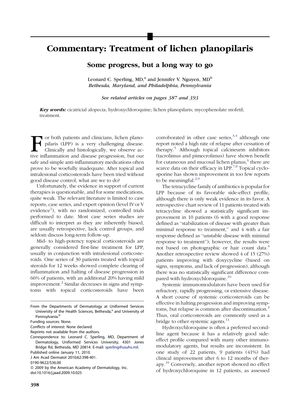TLDR Effective treatments for lichen planopilaris are unclear due to inconsistent results and a lack of strong research evidence.
In the 2010 document, the authors discuss the difficulty in treating lichen planopilaris (LPP) due to the lack of strong evidence for current therapies. They mention that the literature is comprised mostly of case reports and series without any randomized controlled trials. Treatments such as topical corticosteroids, tetracycline antibiotics, and systemic immunomodulators have shown inconsistent results. For instance, topical steroids resulted in 66% complete clearing in 30 patients but had high relapse rates, while hydroxychloroquine improved symptoms in 41% of 22 patients in one study but was ineffective in another with 12 patients. Mycophenolate mofetil showed some clinical improvement and was well-tolerated. The authors reference two articles that used the Lichen Planopilaris Activity Index (LPPAI) to assess treatment efficacy, which showed promising results, but they note the need for validation of this subjective measure. They suggest digital photography as a means to improve objectivity in future research. Despite the lack of strong evidence, topical and intralesional corticosteroids are recommended as first-line treatments, with tetracyclines and hydroxychloroquine as second-line options. For refractory cases, more potent systemic drugs may be considered, despite their potential adverse effects. The document emphasizes the necessity for more rigorous studies to establish effective treatments for LPP.
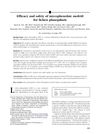 66 citations
,
January 2010 in “Journal of The American Academy of Dermatology”
66 citations
,
January 2010 in “Journal of The American Academy of Dermatology” Mycophenolate mofetil was effective for most patients in treating scarring hair loss, but some had side effects.
43 citations
,
March 2009 in “Archives of dermatology” No treatment showed clear superiority for lichen planopilaris.
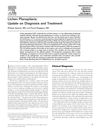 160 citations
,
March 2009 in “Seminars in Cutaneous Medicine and Surgery”
160 citations
,
March 2009 in “Seminars in Cutaneous Medicine and Surgery” New insights show Lichen Planopilaris is a rare, scarring hair loss condition, hard to treat, mainly affecting middle-aged women, and significantly impacts mental health.
113 citations
,
May 2007 in “Journal of the American Academy of Dermatology” The study found that steroids and tetracycline helped treat active Lichen planopilaris, and hair transplants were good for later stages.
254 citations
,
December 2003 in “Journal of the American Academy of Dermatology” Accurate diagnosis and aggressive treatment are crucial to prevent permanent hair loss in cicatricial alopecia.
37 citations
,
December 2001 in “Journal of the American Academy of Dermatology” Thalidomide significantly improved hair regrowth in a woman with lichen planopilaris.
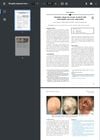 1 citations
,
August 2022 in “JAAD case reports”
1 citations
,
August 2022 in “JAAD case reports” Tofacitinib and oral minoxidil may help treat Sisaipho alopecia areata.
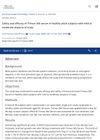 April 2022 in “Journal of Cosmetic Dermatology”
April 2022 in “Journal of Cosmetic Dermatology” Trimax-360 Serum, when used for 98 days, safely and effectively improves hair growth, thickness, and density without any side effects.
 5 citations
,
January 2020 in “Journal of Dermatology”
5 citations
,
January 2020 in “Journal of Dermatology” Temporal hair loss relates to overall scalp hair loss in women.
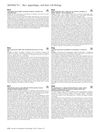 April 2019 in “Journal of Investigative Dermatology”
April 2019 in “Journal of Investigative Dermatology” Women with scarring alopecia are less likely to have used hormone replacement therapy or oral contraceptives compared to those with female pattern hair loss.
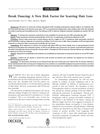 11 citations
,
May 2011 in “Journal of Cutaneous Medicine and Surgery”
11 citations
,
May 2011 in “Journal of Cutaneous Medicine and Surgery” Break dancing on the head may cause a type of scarring hair loss that needs early treatment to prevent permanent damage.
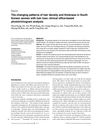 41 citations
,
December 2008 in “International Journal of Dermatology”
41 citations
,
December 2008 in “International Journal of Dermatology” South Korean women with hair loss have lower hair density and thickness compared to healthy women.
 5 citations
,
October 1988 in “Clinics in Dermatology”
5 citations
,
October 1988 in “Clinics in Dermatology” Minoxidil promotes hair growth but exact mechanism is unknown.
